Return of the King
J.R.R. Tolkien
The climactic volume of the trilogy, wherein the little hobbit and his trusty companions make a terrible journey to the heart of the land of the Shadow in a final reckoning with the power of Sauron.
0345296087
The Silmarillion
J.R.R. Tolkien
The Silmarillion is J.R.R. Tolkien's tragic, operatic history of the First Age of Middle-Earth, essential background material for serious readers of the classic Lord of the Rings saga. Tolkien's work sets the standard for fantasy, and this audio version of the "Bible of Middle-Earth" does The Silmarillion justice. Martin Shaw's reading is grave and resonant, conveying all the powerful events and emotions that shaped elven and human history long before Bilbo, Frodo, Gandalf and all the rest embarked on their quests. Beginning with the Music of the Ainur, The Silmarillion tells a tale of the Elder Days, when Elves and Men became estranged by the Dark Lord Morgoth's lust for the Silmarils, pure and powerful magic jewels. Even the love between a human warrior and the daughter of the Elven king cannot defeat Morgoth, but the War of Wrath finally brings down the Dark Lord. Peace reigns until the evil Sauron recovers the Rings of Power and sets the stage for the events told in the Lord of the Rings. This is epic fantasy at its finest, thrillingly read and gloriously unabridged. (Running time: 14 hours, 6 CDs)
0345306929
|
THE TWO TOWERS
J.R.R. Tolkien
This is the second book in the trilogy "The Lord of the Rings". It tells the epic story of the great quest undertaken by Frodo and the Fellowship of the Ring and involves Gandalf the Wizard, Merry, Pippin and Sam, Gimli the Dwarf and Strider.
0345296060
The Children of Hurin
J.R.R. Tolkien, Christopher Tolkien
The first complete book by J.R.R. Tolkien in three decades—since the publication of The Silmarillion in 1977—The Children of Húrin reunites fans of The Hobbit and The Lord of the Rings with Elves and Men, dragons and Dwarves, Eagles and Orcs. Presented for the first time as a complete, standalone story, this stirring narrative will appeal to casual fans and expert readers alike, returning them to the rich landscape and characters unique to Tolkien.
Adam Tolkien on The Children of Húrin
How did a lifetime of stories become The Children of Húrin? In an essay on the making of the book, Adam Tolkien, grandson of J.R.R. Tolkien (and French translator of his History of Middle-earth), explains that the Húrin legends made up the third "Great Tale" of his grandfather's Middle-earth writing, and he describes how his father, Christopher Tolkien, painstakingly collected the pieces of the legend into a complete story told only in the words of J.R.R. Tolkien. "For anyone who has read The Hobbit and The Lord of the Rings," he writes, The Children of Húrin "allows them to take a step back into a larger world, an ancient land of heroes and vagabonds, honour and jeopardy, hope and tragedy."
A Look Inside the Book
This first edition of The Children of Húrin is illustrated by Alan Lee, who was already well-known for his Tolkien illustrations in previous editions (see our Tolkien Store for more) as well as his classic collaboration with Brian Froud, Faeries, and his Kate Greenaway Medal-winning Black Ships Before Troy, before his Oscar-winning work as conceptual designer for Peter Jackson's Lord of the Rings film trilogy brought him even greater acclaim. Here's a quick glimpse of two of Lee's interior illustrations for The Children of Húrin. (Click on each to see larger images.)
Questions for Alan Lee
We had the chance to ask Alan Lee a few questions about his illustrative collaboration with the world imagined by J.R.R. Tolkien:
Amazon.com: How much of a treat was it to get first crack at depicting entirely new characters rather than ones who had been interpreted many times before? Was there one who particularly captured your imagination?
Lee: Although it was a great honor to illustrate The Children of Húrin, the characters and the main elements of the story line are familiar to those who have read The Silmarillion and Unfinished Tales, and these narratives have inspired quite a few illustrators. Ted Nasmith has illustrated The Silmarillion and touched on some of the same characters and landscapes. This was the first time that I ventured into the First Age; while working on The Lord of the Rings books and films—and The Hobbit—I—I've had to refer back to events in Middle-earth history but not really depict them.
I'm drawn to characters who bear similarities to the protagonists in myths and legends; these correspondences add layers and shades of meaning, and most of the characters in this story have those archetypal qualities. However, I prefer not to get too close to the characters because the author is delineating them much more carefully than I can, and I'm wary of interfering with the pictures that the text is creating in the reader's mind.
Amazon.com: The Húrin story has been described as darker than some of Tolkien's other work. What mood did you try to set with your illustrations?
Lee: It is a tragic story, but the darkness is offset by the light and beauty of Tolkien's elegiac writing. In the illustrations I tried to show some of the fragile beauty of the landscapes and create an atmosphere that would enhance the sense of foreboding and impending loss. I try to get the setting to tell its part in the story, as evidence of what happened there in the past and as a hint at what is going to occur. My usual scarred and broken trees came in handy.
Amazon.com: You were a conceptual designer (and won an Oscar) for Peter Jackson's film trilogy of The Lord of the Rings, which I think we can safely say had a bit of success. How does designing for the screen compare to designing for the page?
Lee: They both have their share of joys and frustrations. It was great to be part of a huge film collaboration and play a small part in something quite magical and monumental; I will always treasure that experience. Film is attractive because I enjoy sketching and coming up with ideas more than producing highly finished artwork, and it's great having several hundred other people lending a hand! But books—as long as they don't get moldy from being left in an empty studio for six years—have their own special quality. I hope that I can continue doing both.
Amazon.com: Of all fiction genres, fantasy seems to have the strongest tradition of illustration. Why do you think that is? Who are some of your favorite illustrators?
Lee: A lot of excellent illustrators are working at the moment—especially in fantasy and children's books. It is exciting also to see graphic artists such as Dave McKean, in his film Mirrormask, moving between different media. I also greatly admire the more traditional work of Gennady Spirin and Roberto Innocenti. Kinuko Craft, John Jude Palencar, John Howe, Charles Vess, Brian Froud ... I'll stop there, as the list would get too long. But—in a fit of pride and justified nepotism—I—I'll add my daughter, Virginia Lee, to the list. Her first illustrated children's book, The Frog Bride [coming out in the U.K. in September], will be lovely.
More Tolkien Favorites
Visit our J.R.R. Tolkien Store for a complete selection of Tolkien classics, including deluxe editions, young readers' editions, and more.
The Lord of the Rings
50th Anniversary Edition
The Hobbit
Collector's Edition
The Atlas of Middle Earth
0618894640
The Children of Hurin
J.R.R. Tolkien, Christopher Tolkien
The first complete book by J.R.R. Tolkien in three decades—since the publication of The Silmarillion in 1977—The Children of Húrin reunites fans of The Hobbit and The Lord of the Rings with Elves and Men, dragons and Dwarves, Eagles and Orcs. Presented for the first time as a complete, standalone story, this stirring narrative will appeal to casual fans and expert readers alike, returning them to the rich landscape and characters unique to Tolkien.
Adam Tolkien on The Children of Húrin
How did a lifetime of stories become The Children of Húrin? In an essay on the making of the book, Adam Tolkien, grandson of J.R.R. Tolkien (and French translator of his History of Middle-earth), explains that the Húrin legends made up the third "Great Tale" of his grandfather's Middle-earth writing, and he describes how his father, Christopher Tolkien, painstakingly collected the pieces of the legend into a complete story told only in the words of J.R.R. Tolkien. "For anyone who has read The Hobbit and The Lord of the Rings," he writes, The Children of Húrin "allows them to take a step back into a larger world, an ancient land of heroes and vagabonds, honour and jeopardy, hope and tragedy."
A Look Inside the Book
This first edition of The Children of Húrin is illustrated by Alan Lee, who was already well-known for his Tolkien illustrations in previous editions (see our Tolkien Store for more) as well as his classic collaboration with Brian Froud, Faeries, and his Kate Greenaway Medal-winning Black Ships Before Troy, before his Oscar-winning work as conceptual designer for Peter Jackson's Lord of the Rings film trilogy brought him even greater acclaim. Here's a quick glimpse of two of Lee's interior illustrations for The Children of Húrin. (Click on each to see larger images.)
Questions for Alan Lee
We had the chance to ask Alan Lee a few questions about his illustrative collaboration with the world imagined by J.R.R. Tolkien:
Amazon.com: How much of a treat was it to get first crack at depicting entirely new characters rather than ones who had been interpreted many times before? Was there one who particularly captured your imagination?
Lee: Although it was a great honor to illustrate The Children of Húrin, the characters and the main elements of the story line are familiar to those who have read The Silmarillion and Unfinished Tales, and these narratives have inspired quite a few illustrators. Ted Nasmith has illustrated The Silmarillion and touched on some of the same characters and landscapes. This was the first time that I ventured into the First Age; while working on The Lord of the Rings books and films—and The Hobbit—I—I've had to refer back to events in Middle-earth history but not really depict them.
I'm drawn to characters who bear similarities to the protagonists in myths and legends; these correspondences add layers and shades of meaning, and most of the characters in this story have those archetypal qualities. However, I prefer not to get too close to the characters because the author is delineating them much more carefully than I can, and I'm wary of interfering with the pictures that the text is creating in the reader's mind.
Amazon.com: The Húrin story has been described as darker than some of Tolkien's other work. What mood did you try to set with your illustrations?
Lee: It is a tragic story, but the darkness is offset by the light and beauty of Tolkien's elegiac writing. In the illustrations I tried to show some of the fragile beauty of the landscapes and create an atmosphere that would enhance the sense of foreboding and impending loss. I try to get the setting to tell its part in the story, as evidence of what happened there in the past and as a hint at what is going to occur. My usual scarred and broken trees came in handy.
Amazon.com: You were a conceptual designer (and won an Oscar) for Peter Jackson's film trilogy of The Lord of the Rings, which I think we can safely say had a bit of success. How does designing for the screen compare to designing for the page?
Lee: They both have their share of joys and frustrations. It was great to be part of a huge film collaboration and play a small part in something quite magical and monumental; I will always treasure that experience. Film is attractive because I enjoy sketching and coming up with ideas more than producing highly finished artwork, and it's great having several hundred other people lending a hand! But books—as long as they don't get moldy from being left in an empty studio for six years—have their own special quality. I hope that I can continue doing both.
Amazon.com: Of all fiction genres, fantasy seems to have the strongest tradition of illustration. Why do you think that is? Who are some of your favorite illustrators?
Lee: A lot of excellent illustrators are working at the moment—especially in fantasy and children's books. It is exciting also to see graphic artists such as Dave McKean, in his film Mirrormask, moving between different media. I also greatly admire the more traditional work of Gennady Spirin and Roberto Innocenti. Kinuko Craft, John Jude Palencar, John Howe, Charles Vess, Brian Froud ... I'll stop there, as the list would get too long. But—in a fit of pride and justified nepotism—I—I'll add my daughter, Virginia Lee, to the list. Her first illustrated children's book, The Frog Bride [coming out in the U.K. in September], will be lovely.
More Tolkien Favorites
Visit our J.R.R. Tolkien Store for a complete selection of Tolkien classics, including deluxe editions, young readers' editions, and more.
The Lord of the Rings
50th Anniversary Edition
The Hobbit
Collector's Edition
The Atlas of Middle Earth
0618894640
Great Book Of Whodunit Puzzles: Mini-Mysteries For You To Solve
Falcon Travis
Test your powers of deduction on 43 phony alibis, baffling clues, bits and pieces of evidence. Decipher codes as you match wits with such great detectives as Will Ketchum and Donna DiAnsa, as well as law enforcement officers like Luke Sharp, Hans Zupp and Carla Kopp. For many of the puzzles you'll find extra hints and clues to help you along, if you need them! "A clever presentation of entertaining puzzles...."—Mathematics Teaching in the Middle School. 128 pages, 25 b/w illus., 5 3/8 x 8 1/4.
0806903481
The Adventures of Huckleberry Finn
Mark Twain
Mark Twain's classic novel, The Adventures of Huckleberry Finn, tells the story of a teenaged misfit who finds himself floating on a raft down the Mississippi River with an escaping slave, Jim. In the course of their perilous journey, Huck and Jim meet adventure, danger, and a cast of characters who are sometimes menacing and often hilarious.
Though some of the situations in Huckleberry Finn are funny in themselves (the cockeyed Shakespeare production in Chapter 21 leaps instantly to mind), this book's humor is found mostly in Huck's unique worldview and his way of expressing himself. Describing his brief sojourn with the Widow Douglas after she adopts him, Huck says: "After supper she got out her book and learned me about Moses and the Bulrushers, and I was in a sweat to find out all about him; but by and by she let it out that Moses had been dead a considerable long time; so then I didn't care no more about him, because I don't take no stock in dead people." Underlying Twain's good humor is a dark subcurrent of Antebellum cruelty and injustice that makes The Adventures of Huckleberry Finn a frequently funny book with a serious message.
0553210793
The Adventures of Tom Sawyer
Mark Twain
Sparkling with mischief, jumping with youthful adventure, Mark Twain's Tom Sawyer is one of the most splendid re-creations of childhood in all of literature. It is a lighthearted romp, full of humor and warmth. It shares with its sequel, Huckleberry Finn, not only a set of unforgettable characters—Tom, Huck, Aunt Polly and others—but a profound understanding of humanity as well. Through such hilarious scenes as the famous fence-whitewashing incident, Twain gives a portrait—perceptive yet tender—of a humanity rendered foolish by his own aspirations and obsessions. Written as much for adults as for young boys and girls, Tom Sawyer is the work of a master storyteller performing in his shirt sleeves, using his best talents to everyone's delight.
0553211285
|







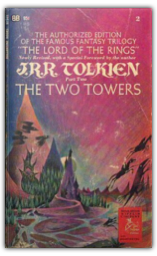
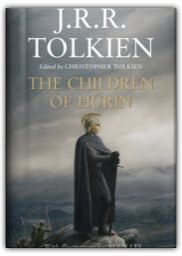
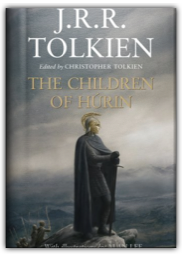
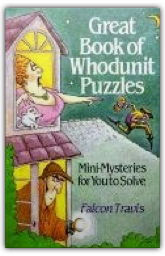
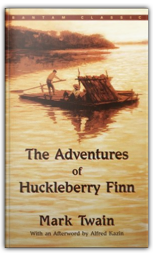
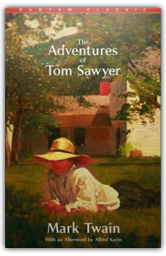



 Made with Delicious Library
Made with Delicious Library